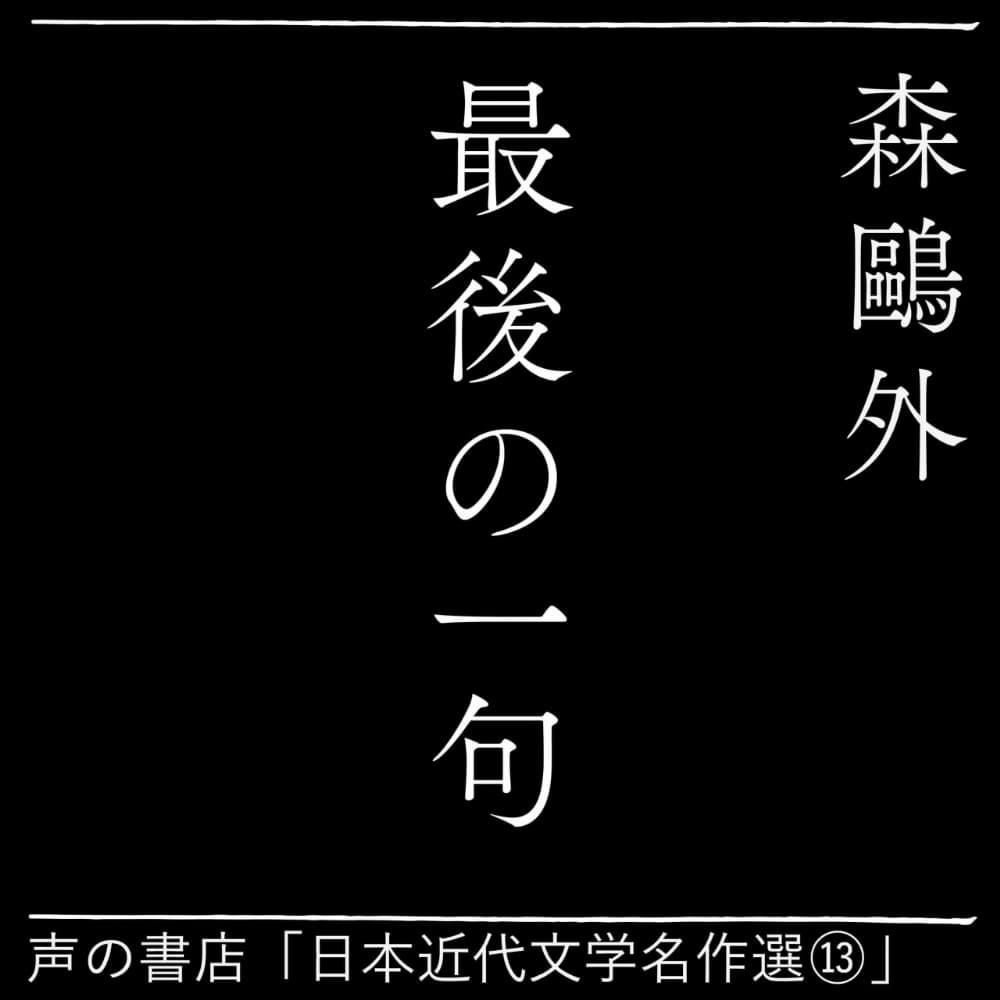
Saigonoikku(The Last Phrase)
【Masterpieces of Modern Japanese Literature⑬】
By Ogai Mori
Narrated by Nana Nagao
Buy from Retailers
A short story by Ogai Mori
“It was on the 23rd of November in the third year of the Genbun era. In Osaka, a notice board was erected stating that a man named Tarohei Katsuraya, a boatman, would be exposed for three days at the mouth of the Kizu River before being executed. The entire city was abuzz with talk of Tarohei, but the ones who felt the weight of this event most profoundly were his family, who had been living in near-total isolation for almost two years at their home near the Horie Bridge in the Minami district. The person who came to inform the Katsuraya household of this anticipated event was none other than Tarohei’s mother-in-law, who lived nearby in the Hirano district.”
This audiobook is a new recording of the “Reading Timeless Story Series” that was performed at the Museum of Modern Japanese Literature on March 23, 2024.
Author : Ogai Mori
Narrator : Nana Nagao
Produced by:Koé no Shoten
Special Thanks:Shigoto, Inc. / ROUDOKU.TALKER.JP
Listening Length:0:34:54
Release Date:2024/6/26
*For how to listen, pricing, purchase methods, payment options, and more, please check each distribution site.
ABOUT THE AUTHOR
1862 – 1922
Born in Iwami Province (present-day Shimane Prefecture), his real name was Rintarō Mori. After graduating from the University of Tokyo’s Faculty of Medicine, he became a military doctor and studied in Germany for four years from 1884. Upon returning to Japan, he published the translated poetry collection Omokage in Kokumin no Tomo in 1889. That same year, he launched the literary criticism magazine Shigarami Sōshi, beginning his career in literary enlightenment. The following year, he published the novel Maihime (“The Dancing Girl”), depicting the tragic love story between a Japanese student and a German woman. From 1892, he serialized a translation of Sokkyo Shijin . He served in the First Sino-Japanese War and, upon his return, founded the magazine Mesamashi-gusa. In 1904, he took part in the Russo-Japanese War as a military doctor. After launching the literary magazine Subaru, he published works such as Wita sekusuarisu(”Vita Sexualis”), Seinen (“Young Men”), and Gan (“The Wild Geese”). He also wrote historical novels, including Okitsu Yagoemon no isho(”The Last Testament of Okitsu Yagoemon”),Abe Ichizoku(”The Abe Clan”), and Takasebune(”The Boat on the Takase River”), as well as the biographical work Shibue Chūsai . Mori laid the foundation for modern Japanese literature.
